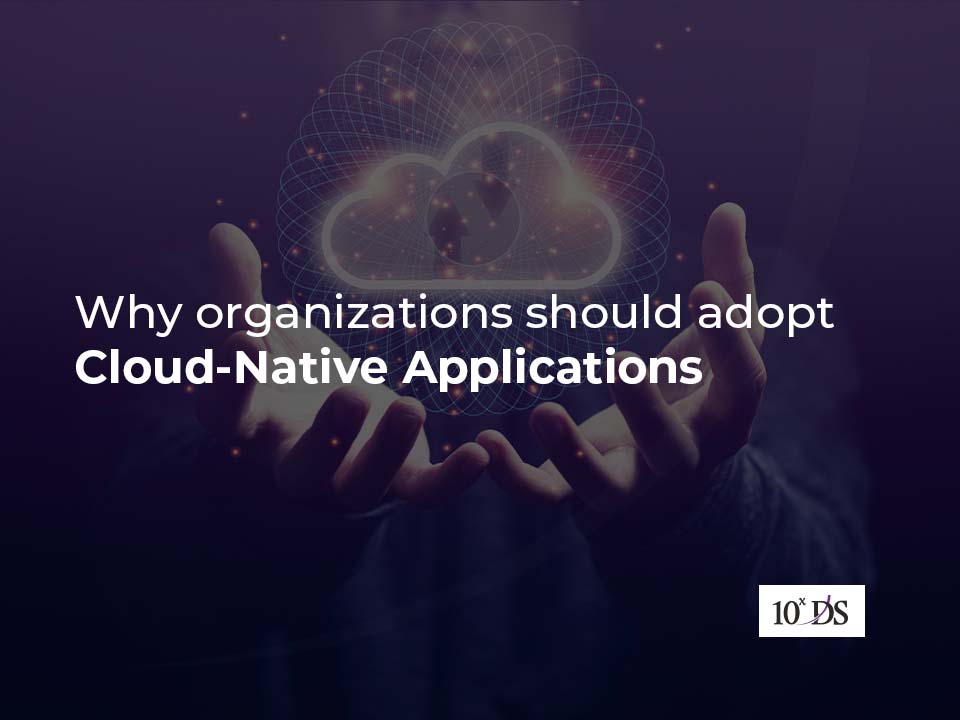
Why organizations should adopt Cloud-Native Applications
The ability to deliver more than expected services and features to customers at a lightning-fast speed gives companies a competitive edge to thrive in the market. Cloud-native applications aim to provide just that by building and managing applications that leverage the advantages of cloud computing. Cloud-native platforms are listed as one of Gartner’s Top Strategic Technology Trends for 2022. According to Gartner, over 85% of enterprises will embrace a cloud-first principle by 2025. Gartner analysts also said that companies will not be able to totally execute their digital strategies without the use of cloud-native architectures and technologies.
Cloud-native applications are hosted in the cloud and are planned to make the most of the intrinsic characteristics of cloud computing. Moving traditionally built applications from on-premises to the cloud will not be able to garner the benefits of cloud computing. So, developing cloud-native applications need new approaches beyond the agile approach. Let’s have a look at what they are:
- Microservices – approach to developing an application as a collection of small services and each service with business capabilities to run in its own process
- Containerization – Each OS instance is divided among isolated containers with a unique writable file system
- DevOps – helps to structure your teams to take advantage of the automation and scalability that cloud-native technologies like containers and microservices offer.
- Cloud-native security – to reduce risks in the enterprises
These new methods help companies to produce the much-needed speed to bring solutions to market; the market is evolving quickly, and no one wants to be late. They help companies to take advantage of cloud computing by running responsive and reliable cloud-native apps that are scalable and reduce risk.
Cloud-native apps are built and deployed in a rapid cadence by small, dedicated feature teams to a platform that offers easy scale-out and hardware decoupling. This approach provides organizations with greater agility, resilience, and portability across cloud environments.
Benefits of Cloud-Native Applications
1. Quick to market
Organizations that can quickly build and deliver applications in response to customer needs and how the market evolves, will be able to achieve enduring success. DevOps practices help organizations to build, test, deploy and sustain applications at a velocity that can never be achieved by companies that opt for traditional application development.
2. Resilient architecture
Cloud-native landscape helps developers and architects design systems that stay online regardless of any hiccups. IT teams don’t have to manage configuring networks, allocating storage and provisioning cloud instances. Approaches like microservices and containerization help to build applications that do not fail often by building resilience through predictable behaviours. If any issues occur in a certain container, they can be isolated quickly to mitigate the impact on business. An entire application need not be put on maintenance for a fault in a single module.
3. Reduced cost and greater flexibility
Cloud service providers offer services at a reasonable cost and companies are choosing more than one cloud environment to reap the benefits of all. Cloud-native applications run on any public or private cloud without upgrades or changes. Many containerization tools are open source and hence do not add up in the cost of application development. The downtime of these applications are very negligible and hence businesses need not account for any loss of business time.
4. Scalability and provisioning
Cloud-native applications help in handling future needs by default. These applications scale quickly, and the subsequent cost incurred will be only for the resources that are being used. Provisioning of features can be managed without interventions using containerizations and it will easily support “pay as you use” and “pay as you go” models.
Conclusion
Cloud-native applications provide a new environment for operating the applications securely, efficiently, reliably, easily and at scale. They also provide auto-provisioning, auto-redundancy and auto-scaling features, without any manual intervention. This shows why modern enterprises are so keen on moving to the cloud rapidly as it offers more features and options to the customers.
Talk to our experts to know more.


